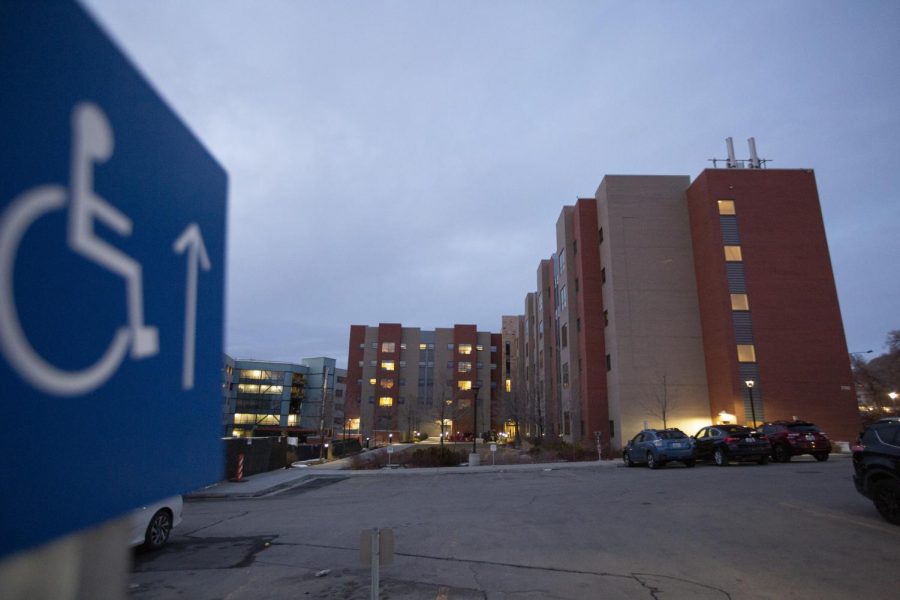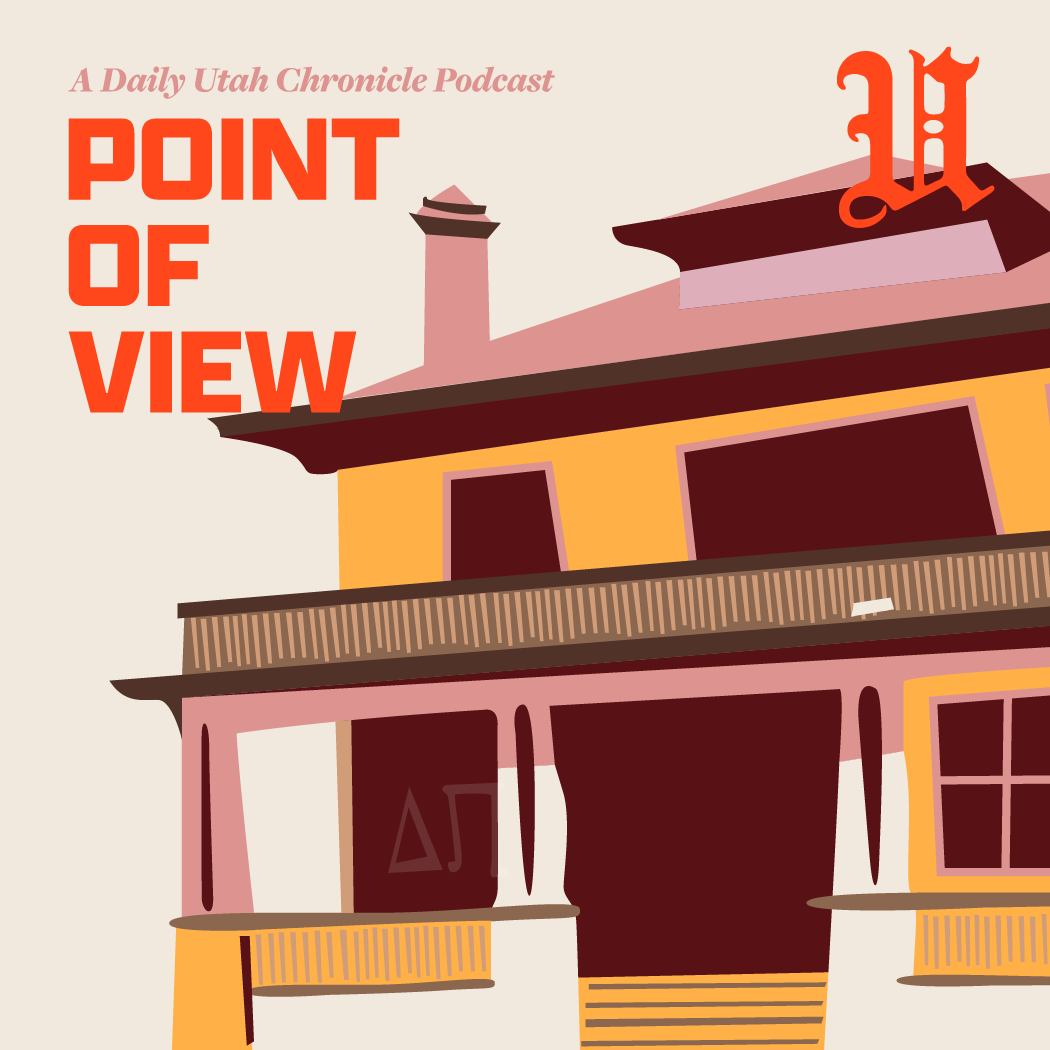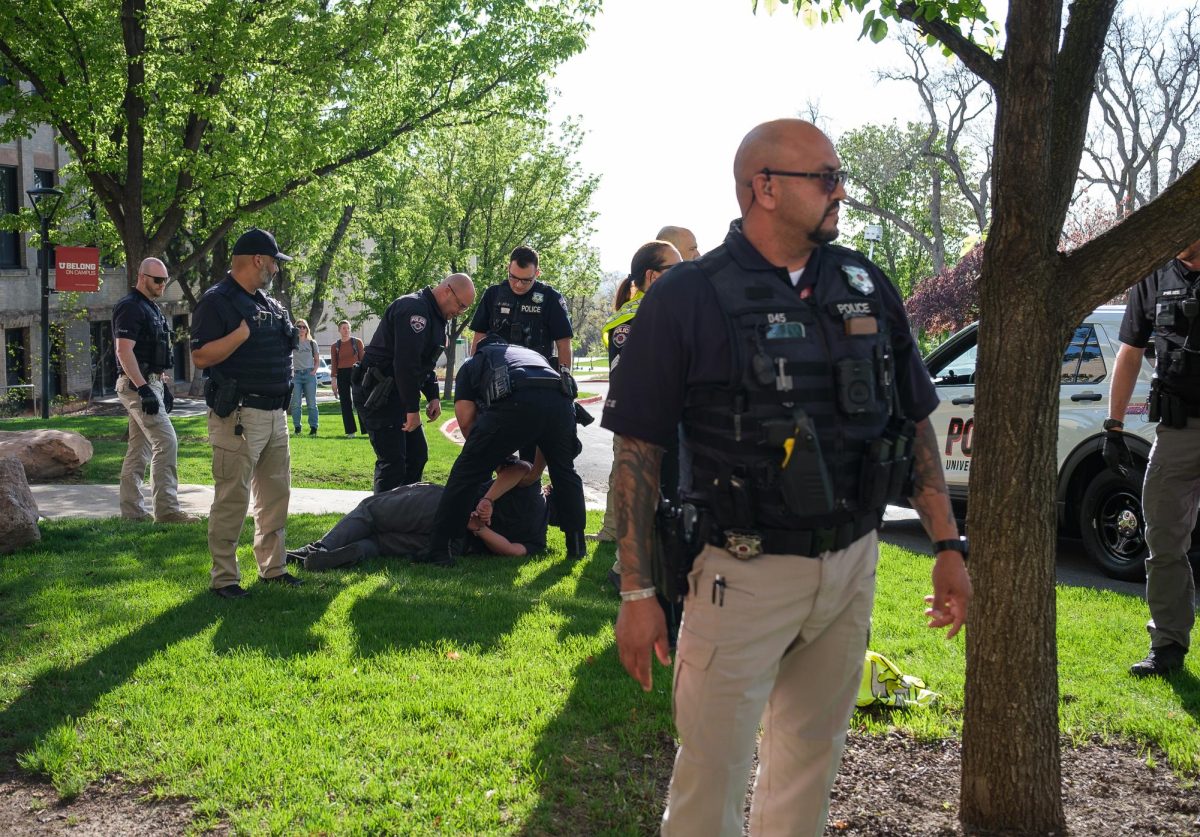MHC Parking Lot is Not Compliant with ADA Regulations
Handicap accessible parking lots at the Marriott Honors Community at the University of Utah have been removed during construction of new building addition.(Justin Prather | Daily Utah Chronicle)
December 21, 2019
Located behind the Marriott Honors Community at the University of Utah, there is a small parking lot with around 10 to 12 parking spots and no accessible parking spaces, better known as handicap parking. This makes the parking lot noncompliant with the Americans with Disabilities Act. ADA regulations state that a parking lot with one to 25 spaces must have at least one accessible spot.
Executive director of commuter services Alma Allred stated that all parking lots on campus are ADA compliant.
“There are just remnants of a parking lot there, and there are handicap spots located on the east side of the Annex,” he said. The Annex is located near the MHC and Kahlert Village, which is currently under construction to be opened in fall 2020.
He said that after the construction is done in that area of campus, the Annex and MHC will be reconnected.
There are handicap parking spots located in the Annex parking lot. However, they are not located at the closest possible distance to the MHC, and they are down a steep hill that does not have a ramp from the building.
The ADA compliance brief states, “When accessible parking spaces are added in an existing parking lot or structure, locate the spaces on the most level ground close to the accessible entrance. An accessible route must always be provided from the accessible parking to the accessible entrance.”

Caroline Lalliss is a freshman at the U with Ehlers-Danlos Syndrome Cardiac-Valvular type, a rare condition with symptoms including heart defects and joint hypermobility, and Postural Orthostatic Tachycardia Syndrome, a condition characterized by abnormal and dangerous increases in heart rate. She said that accessibility on campus is a major issue.
“As a person with a disability, spots reserved for those of us who require accommodation are necessary for us to function,” she said. “Without it, my service dog has little to no space to get in and out of my car, and if I end up going my body ends up paying for it later, either with dislocated joints or my heart rate being dangerously elevated.”
She said that ignoring issues like parking fosters a culture where accessibility is treated as an afterthought. She said accessibility should be prioritized, especially because the rights of people with disabilities are protected under the ADA.
Lalliss said she has noticed there are several other places on campus that are not accessible. She said issues that many people might never notice can make life for someone with a disability more difficult. Lallis said the push buttons on many doors are too high for people in wheelchairs and her service dog, the door to get into her room is too heavy, and the accessible spots at the Union are much less accessible after recent construction.
She also noted that the snowplow has consistently covered accessible parking spaces with snow. She has even had to shovel out parking spots for herself. Lalliss also claimed that the University Police Department and Commuter Services are not ticketing cars that are wrongfully parked in inaccessible spots.
“To many able-bodied people, these things never cross their minds,” she said. “I wish I could have one person follow me around one day, just so I could show them the issues that I face.”









Delia • Dec 21, 2019 at 4:59 pm
Go girl! This is such an issue everywhere. If we don’t speak up, nothing happens. Age 68, EDS patient diagnosed at 55.